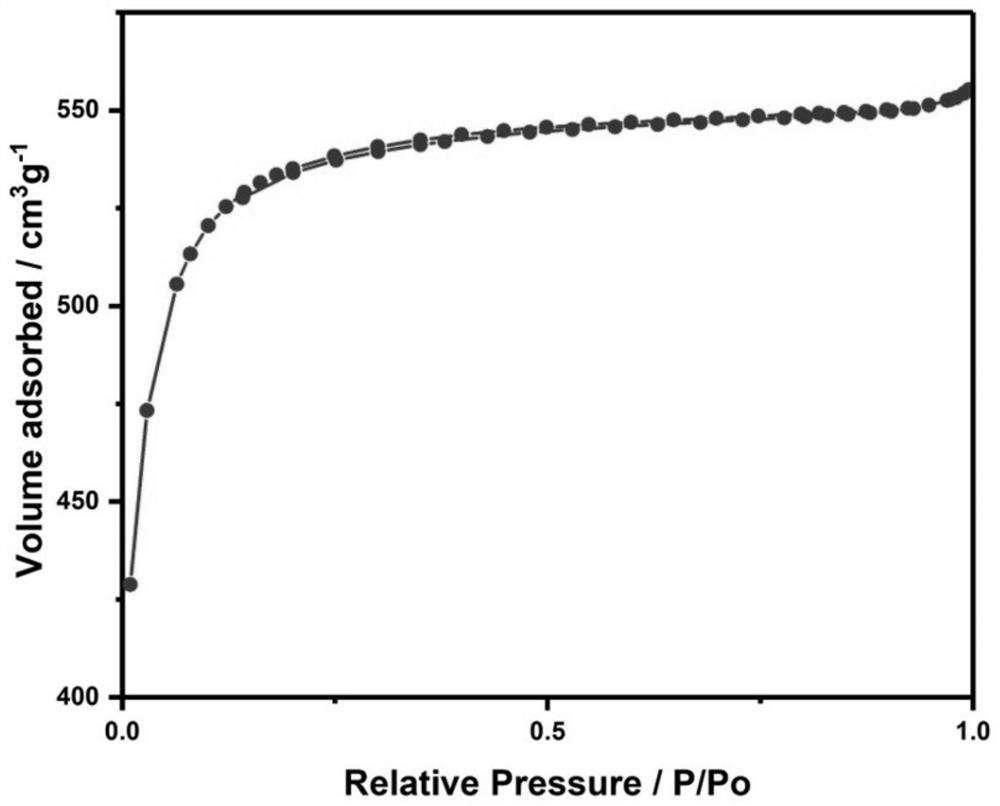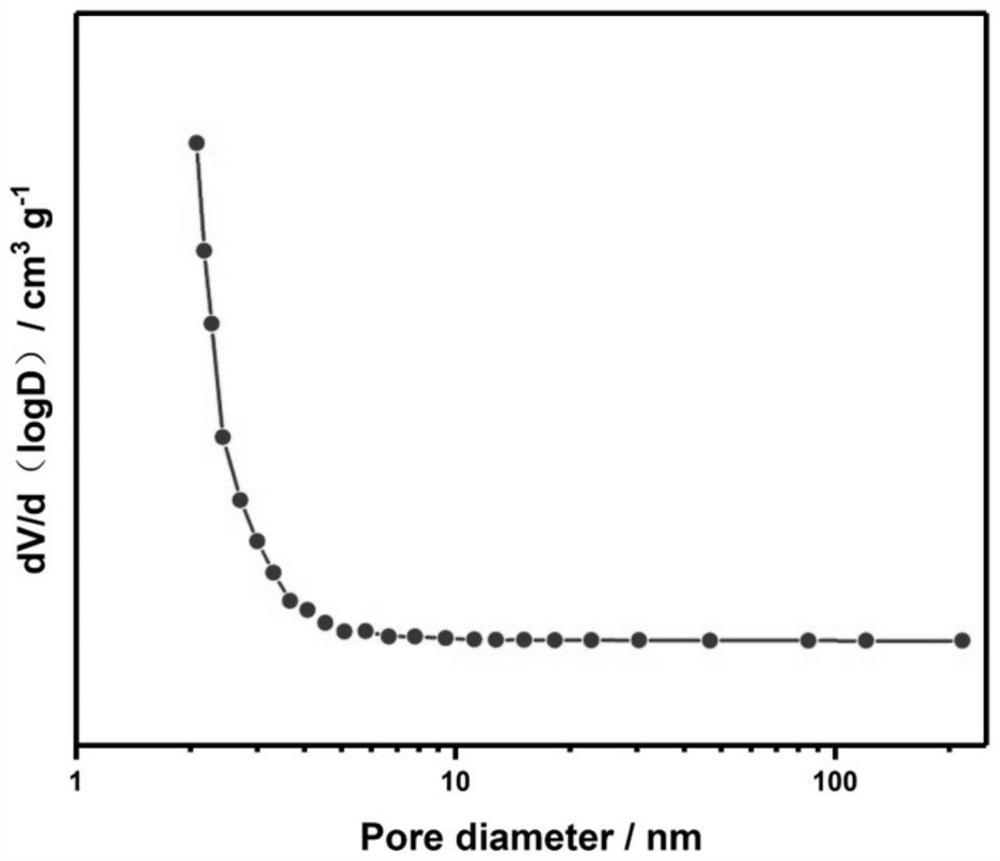Sisal-based nitrogen and phosphorus co-doped activated carbon as well as preparation method and application thereof
A technology of co-doping, activated carbon, applied in chemical instruments and methods, inorganic chemistry, non-metallic elements, etc., can solve the problems of poor rate performance, the electrochemical performance of electrode materials is not very favorable, etc. Rich structure and strong practical effect
- Summary
- Abstract
- Description
- Claims
- Application Information
AI Technical Summary
Problems solved by technology
Method used
Image
Examples
Embodiment 1
[0036] Step 1: Add 48g of potassium hydroxide, 3g of 30wt% hydrogen peroxide, 27.8g of urea and 10g of potassium phosphate in 500mL of deionized water in order to form a mixed solution after ultrasonic dissolution, then add 50g of 2-5mm short fibrous swords to the mixed solution hemp fiber. Stand still at 4°C for 120 minutes, and then at 0°C for 12 hours to obtain a pretreated sisal fiber mixture.
[0037] Step 2, drying the sisal fiber mixture obtained in Step 1 at 65° C. for 12 hours.
[0038] Step 3, place the dried sisal fiber mixture in step 2 in a nitrogen atmosphere, and heat at 3°C min -1 The heating rate was raised to 300°C, kept for 35 minutes for carbonization, and then at 3°C min -1 Raise the temperature to 650°C at a heating rate of 650°C and keep it warm for 120 minutes for activation to obtain crude activated carbon.
[0039] Step 4, the gac crude product that obtains in the step 3 is first used 6mol L -1 hydrochloric acid, and then washed with deionized...
Embodiment 2
[0042] Step 1: Add 48g of potassium hydroxide, 4.5g of 30wt% hydrogen peroxide, 27.8g of urea and 10g of potassium phosphate in 500mL of deionized water in order to form a mixed solution, then add 50g of 2-5mm short fibrous Sisal fiber. Stand still at 4°C for 35 minutes, and then stand at 0°C for 8 hours to obtain a pretreated sisal fiber mixture.
[0043] Step 2, drying the sisal fiber mixture obtained in Step 1 at 65° C. for 12 hours.
[0044] Step 3, place the dried sisal fiber mixture in step 2 in a nitrogen atmosphere, and heat at 1°C min -1The heating rate was raised to 250°C, kept for 60 minutes for carbonization, and then at 3°C min -1 Raise the temperature to 750° C. at a heating rate of 750° C. and keep it warm for 60 minutes for activation to obtain crude activated carbon.
[0045] Step 4, the gac crude product that obtains in the step 3 is first used 6mol L -1 hydrochloric acid, and then washed with deionized water until neutral, and finally placed in an oven...
Embodiment 3
[0047] Step 1: Add 60g of potassium hydroxide, 3g of 30wt% hydrogen peroxide, 27.8g of urea and 10g of potassium phosphate in 500mL of deionized water in order to form a mixed solution after ultrasonic dissolution, and then add 50g of 2-5mm short fibrous swords to the mixed solution hemp fiber. Stand still at 4°C for 60 minutes, and then stand at 0°C for 8 hours to obtain a pretreated sisal fiber mixture.
[0048] Step 2, drying the sisal fiber mixture obtained in Step 1 at 65° C. for 12 hours.
[0049] Step 3, place the dried sisal fiber mixture in step 2 in a nitrogen atmosphere, -1 The heating rate was raised to 280°C, kept for 50 minutes for carbonization, and then at 2°C min -1 Raise the temperature to 600°C at a heating rate of 600°C and keep it warm for 90 minutes for activation to obtain crude activated carbon.
[0050] Step 4, the gac crude product that obtains in the step 3 is first used 6mol L -1 hydrochloric acid, and then washed with deionized water until neut...
PUM
| Property | Measurement | Unit |
|---|---|---|
| length | aaaaa | aaaaa |
Abstract
Description
Claims
Application Information
 Login to View More
Login to View More - R&D
- Intellectual Property
- Life Sciences
- Materials
- Tech Scout
- Unparalleled Data Quality
- Higher Quality Content
- 60% Fewer Hallucinations
Browse by: Latest US Patents, China's latest patents, Technical Efficacy Thesaurus, Application Domain, Technology Topic, Popular Technical Reports.
© 2025 PatSnap. All rights reserved.Legal|Privacy policy|Modern Slavery Act Transparency Statement|Sitemap|About US| Contact US: help@patsnap.com



